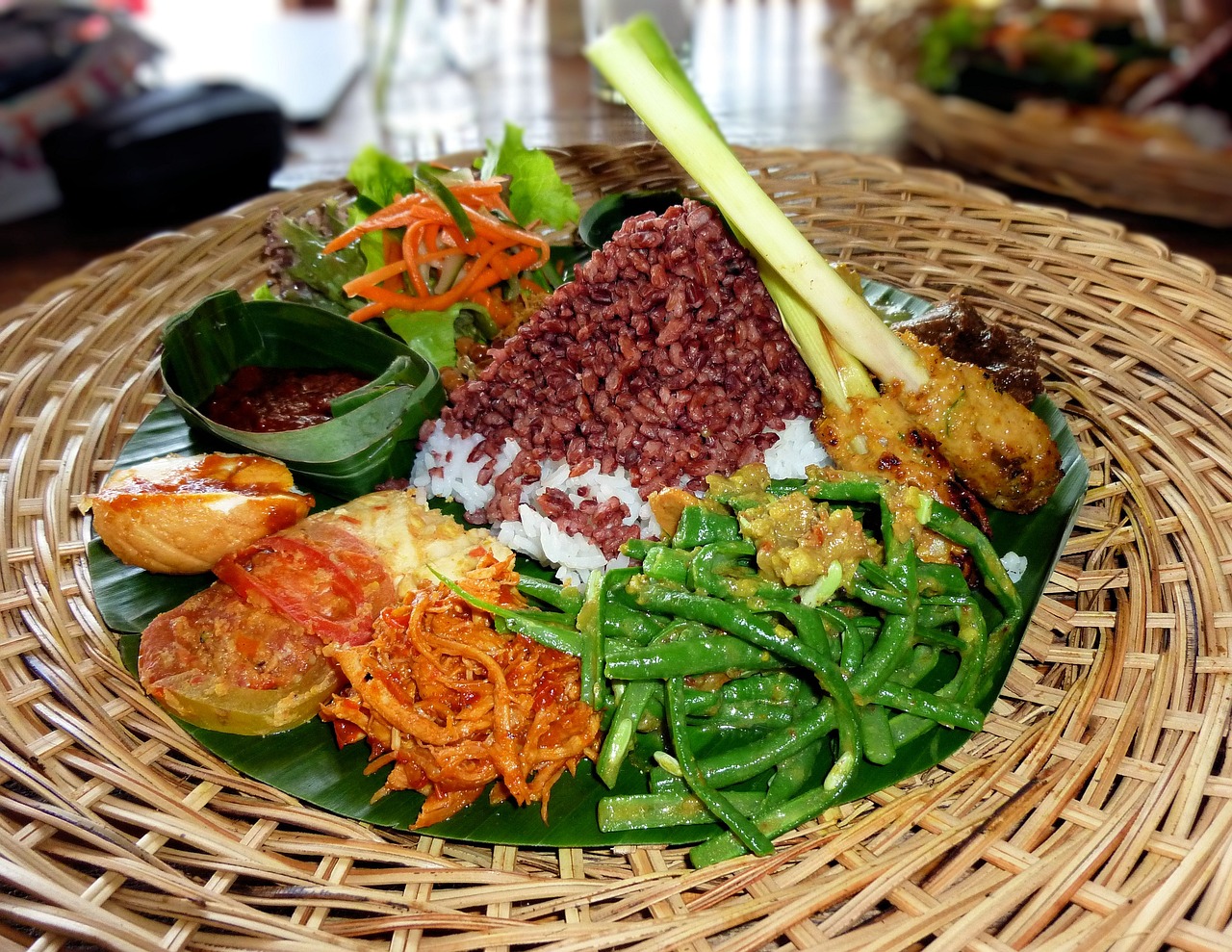Indonesia’s multifaceted cooking has various influences: Arab and Indian merchants brought flavors, rose embodiment, and dishes like martabak (stuffed flapjacks). The Spanish presented chiles. Rijsttaffel (truly “rice table”) is the overwhelming Dutch elucidation of the conventional Indonesian dinner of rice in addition to a few dishes. Be that as it may, the Chinese workers likely had the greatest effect, bringing noodles, soy sauce, and soybeans to the archipelago.
On the off chance that you’ve cooked Indian as well as Thai sustenance, you’ll discover the fixings commonplace. Turmeric, cumin, cinnamon, and coriander are the absolute most utilized flavors. Lemongrass, lime leaves, ginger, and galangal are pervasive. Nutmeg, local to Indonesia’s Banda Islands (some portion of the Maluku or unique Spice Islands) is typically sprinkled into Dutch-impacted dishes like macaroni schotel and risoles. These flavors and herbs are mixed into zest glues called bumbu, the very establishment of Indonesian cooking. Herbs like lemongrass, salam, and galangal (a trio I name the Indonesian bundle garni) are hurled in while cooking and evacuated before serving.
Fragrant Ginger
Utilized sparingly, sweet-smelling ginger’s special camphor-like flavor is an appreciated expansion to dishes like vegetables in coconut stew and Balinese duck curry. This ruddy dark colored rhizome is most likely one of the darkest Indonesian herbs—even I just found it as of late when I attended a cooking class Bali was having in a big variety when I visited the island.
Fricasseed Shallots
Fricasseed shallots are showered over everything from seared noodles to soups and sambals. My mother even adds it to spring move fillings for flavor and crunch. Browned shallots aren’t hard to make, simply dreary and muddled. My mother would cut shallots (and Asian shallots are modest), dry them in the sun, at that point of searing. When I returned home from school as a young lady, I would regularly discover my mother by a heap of fricasseed shallots sitting on daily paper to drench up the oil.
Galangal
An important part from the ginger family, galangal has an unmistakable aroma and flavor. Search for the more delicate youthful galangal that is pinkish in shading. In Indonesian cooking, it is utilized as a part of braises, soups, and for broiled chicken. Peel at that point hack the rhizome before adding it to a flavor glue. On the other hand, cut into half-inch cuts and hurl into soups. On the off chance that you can’t discover crisp galangal, get them dried and soak for 10 minutes in hot water before utilizing.
Indonesian Palm Sugar
Indonesian palm sugar is sold in strong pieces. Produced using the sap of the arenga palm (and in some cases coconut palm), it tastes of molasses or caramel and is utilized to make desserts and to adjust season in certain flavorful dishes. To quantify, shave or mesh pieces off the square. Granulated coconut sugar or dim darker sugar makes great substitutes.
Indonesian Sweet Soy Sauce
The Chinese acquainted Indonesians with soy sauce and they made it their own particular by including sugar! The Indonesian form has the typical soybeans, wheat, and salt yet in addition incorporates palm sugar and molasses. It is substantially thicker and sweeter than general soy sauce which is called kecap asin or kecap Cina. On the off chance that you can’t find Indonesian sweet soy sauce, Chinese or Thai sweet soy sauce will get the job done. Or on the other hand you can make your own with this formula.
Lime
Limes are crucial in Indonesian cooking. The juice and skin are both utilized, for drinks, to enhance marinades, and in soups. The leaves are more ordinary, adding aroma and flavor to coconut-based braises and soups like tripe soup (soto babat). Intense whether fresh or dried, the leaves can be ripped off the spine and folded to discharge its scent and flavor; or cut meagerly into strips. Solidified leaves keep perfectly.



